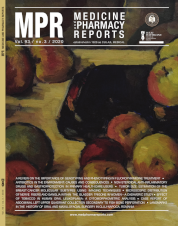Microscopic distribution of nerve fibers and ganglia within the bladder trigone in women – a cadaveric study
DOI:
https://doi.org/10.15386/mpr-1604Keywords:
nerve endings, ganglia, overactive bladder, botulinum toxin, S100, CD56Abstract
Background and aims. The microscopic description of the nerve fibers responsible for micturition is useful when planning minimally invasive interventions for refractory overactive bladder such as intravesical botulinum toxin injections. The purpose of this study was to investigate the density of nerves and ganglia within the bladder trigone, with a focus on identifying areas with a higher density.
Methods. Urinary bladders were harvested from 3 female cadavers. Following tissue processing, a total of 100 slides stained with hematoxylin and eosin (HE) and immunostained for S100 and CD56 were analyzed. The density of nerve fibers (NFD) and ganglia (GD) in 3 different bladder trigone compartments was analyzed.
Results. The NFD in the central compartment (16.2±3.9) was significantly higher than in both the peripheral (p=0.0005) and the intermediary (p=0.01) compartments. The GD was the highest in the peripheral compartment, but it was not significantly different from the other compartments.
Conclusions. This microscopic study showed a pattern of distribution with a dominance of nerve fibers in the central compartment and a rather homogenous distribution of the ganglia within the female bladder trigone.
Downloads
Published
How to Cite
Issue
Section
License
The authors are required to transfer the copyright of the published paper to the journal. This is done by agreeing to sign the Copyright Assignment Form. Whenever the case, authors are also required to send permissions to reproduce material (such as illustrations) from the copyright holder.

The papers published in the journal are licensed under a Creative Commons Attribution-NonCommercial-NoDerivatives 4.0 International License.

